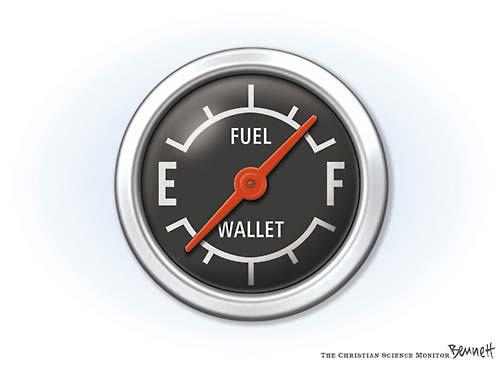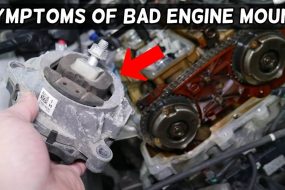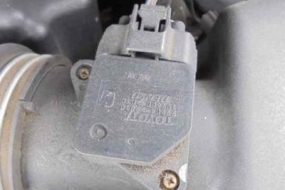
After replacing a fuel pump, you don’t need to reset the fuel gauge because fuel gauges operate independently of the fuel pump, and replacing the fuel pump alone should not require a reset of the gauge.
However, there are scenarios where the fuel gauge may not read accurately after a fuel pump replacement, and in such cases, resetting the fuel gauge may be necessary. In that case, how do you reset the fuel gauge after replacing the fuel pump?
How to Reset Fuel Gauge After Replacing Fuel Pump
There are different ways by which you can reset the fuel gauge after fuel pump replacement. These methods vary depending on the kind of car you drive.
For example, if your car comes with a “trip/odo” button, you can reset the fuel gauge by following the procedure below:
- Put the Key on the ignition
- Turn the ignition on without starting the car
- Press on the “trip/odo” button and put the odometer into “ODO” mode
- Turn the key back to the off position without starting the car
- Press on the “trip/odo” button and turn the key into the ON position
- Continue to hold the button for 4 seconds after the car is turned on
- For 2 times, press and hold the “trip/odo” button and on the 3 third time, release the button
- Press on the “trip/odo” button again until you see “1” on your odometer
- Keep holding the button after the odometer says “1” to complete the reset process
- When the odometer says move back to normal, you can release your hand from the “trip/odo” button
- The reset should be complete by now.
Nevertheless, this method only works for those who have a “trip/odo” button in their car. For those that come with the “trip/odo” button, the process of resetting the gauge may vary. You may need to check your car manuals for guidelines.
Another method you can use to reset your fuel gauge after replacing the fuel pump is the calibration process. This is because some vehicles have self-calibrating fuel gauges. They adapt to changes in fuel levels over time and can correct inaccuracies.
To initiate this calibration process, you should drive your vehicle for some time, allowing the system to adjust to the new fuel pump and fuel level. Over time, the gauge should become more accurate as it recalibrates itself.
However, before resetting the fuel gauge after fuel pump replacement, you must:
- Check the Wiring and Electrical Connections: Sometimes, fuel gauges fail to read because of bad wiring and electrical connections. When you were replacing the fuel pump, did you connect the wiring and electrical connections properly? Having loose or damaged wiring can affect the flow of information from the fuel level sending unit to the gauge.
- Check the Fuel Level Sending Unit: The fuel level sending unit is part of the fuel pump assembly and is responsible for sending information to the fuel gauge. If it goes bad during the replacement or was not properly installed, it can cause the gauge to read incorrectly because of the wrong information it’s sending to the gauge. Therefore, inspecting it will tell you whether you made a mistake or not.
I’ve heard this problem before. After replacing the fuel filter in my Lexus IS300, during the installation, the fuel gauge was not properly installed. I had to remove the installation and reinstall it again before the gauge started reading again.
Be that as it may, it is always important to consult your car manual in situations like this because the manual may contain the step-by-step process on how to reset the fuel gauge according to the make and model of your vehicle.
Why is my Fuel Gauge Not Working After Changing the Fuel Pump?
If after replacing your fuel pump your fuel pump fails to work, it can be because of a:
1. Wiring and Connections Not Properly Done
Maybe during the replacement process, wires got damaged, or connections became loose causing disruption in the signal between the fuel level sending unit and the gauge. If this is the case, then, you can connect the wirings the proper way to see if the fuel gauge will be fixed.
2. Incorrect Installation of Fuel Level Sending Unit
The fuel level-sending unit is part of the fuel pump assembly and is responsible for measuring the fuel level in the tank. If it was not installed correctly during the bad fuel pump replacement, it can lead to inaccuracies in the fuel gauge readings.
3. Damaged Fuel Level Sending Unit
If the fuel-sending unit is damaged during the fuel pump replacement, it can cause the fuel gauge not to work after changing the fuel pump. You should inspect the fuel-sending unit to be sure it’s still in good condition.
4. Your Type of Vehicle
Depending on your make and model of vehicle, it may need some time for the car’s computer system to recalibrate to adapt to changes in fuel levels. You can drive the car for a while to see if the gauge becomes more accurate as it self-calibrates.
5. Software or Sensor Issues
Some modern vehicles have more complex fuel gauge systems that rely on sensors and software. Software glitches or sensor malfunctions can lead to inaccurate readings. You can use a scanner to reset the fuel gauge or update the software to solve the problem.
Conclusion
You don’t need to reset the fuel gauge after replacing the fuel pump but if you have to so, you can do it through the “trip/odo” button on your dashboard. You can check your car manual if your car does not come with any physical buttons. The manual may have a process by which you can reset the fuel gauge.









